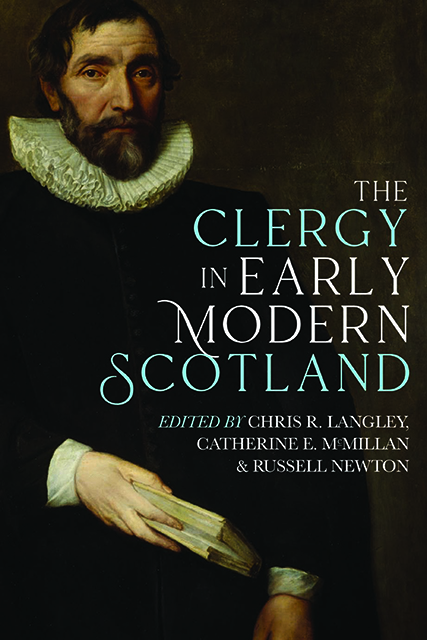6 - Pastors in Search of a Congregation: Clerical Calls for Reform before 1546
Published online by Cambridge University Press: 14 January 2023
Summary
Before early modern Scottish Protestant clergy could fully immerse themselves in parish ministry, they, and the beliefs they embodied, needed to be legalised and legitimised. In the decades preceding the Reformation Parliament of 1560, Scots wanting religious change embarked on a propaganda campaign to win the hearts and minds of their countrymen and to turn them away from the Catholic Church. Between 1527 and 1546 reform-minded clergymen (who were working within the Catholic Church) actively campaigned to find an institution or community willing to endorse and support their cause – preferably one with the power to effect lasting change. To bring about their desired reformation of religion, reformist clergy first needed to find a supportive and influential congregation.
While a number of laymen were active in these persuasive efforts, this chapter focuses specifically on appeals made by reformers from among the clergy, namely Patrick Hamilton, Alexander Alesius, Alexander Seton, John Kyllour, and George Wishart. In their search for an audience with the power to protect and promote reform, these individual reformers tailored their appeals to specific markets, utilising certain media to address targeted audiences. Grouping the surviving propaganda from the era by audience and media, this chapter provides new insight into the development of the reform movement and its persuasive agenda: starting in the universities (1520s–30s), moving to the royal court (1530–40s), and, finally, to the wider nobility and the general public (1540s). When one audience rejected the message, the reformers turned their attentions to another, casting their nets ever wider, creating radiating circles of appeal. Perhaps what makes the pattern of radiating circles all the more remarkable is the fact that the reform movement lacked any organised, consistent leadership in its early decades. Although it would briefly coalesce around clerics Patrick Hamilton (in 1527/28) and George Wishart (from 1543–6), their executions, in 1528 and 1546 respectively, would disperse the movement, sending it underground. Without a Scottish Luther or Calvin to direct and shape the movement, early reformers acted individually or in small groups, significantly limiting their audiences and their reach.
The early decades of Scottish reform are often treated as simply a preface for studies focusing on 1559/60 and after.
- Type
- Chapter
- Information
- The Clergy in Early Modern Scotland , pp. 111 - 129Publisher: Boydell & BrewerPrint publication year: 2021



